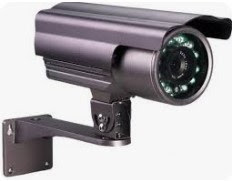To conduct a successful CCTV HD and
IP camera installation, you'll need to follow a systematic approach to ensure
optimal performance and coverage. Here's a step by step guide:
i. Site Survey and Planning:
Conduct a thorough survey of the premises to identify key areas that
require surveillance.
Consider factors such as lighting conditions, potential blind spots, and
areas of high traffic or vulnerability.
Create a comprehensive plan detailing camera placement, wiring routes,
and network infrastructure requirements.
ii. Selecting Cameras:
Choose highquality CCTV HD and IP cameras based on the specific
requirements of the installation.
Consider factors such as resolution, lens type, weather resistance,
infrared capabilities for night vision, and remote access features.
iii. Network Infrastructure:
Ensure that the network infrastructure, including switches, routers, and
cabling, is capable of supporting IP cameras.
Plan for sufficient bandwidth and network capacity to accommodate high definition
video streams from multiple cameras.
iv. Installation:
Mount the cameras securely in their designated positions, ensuring
proper alignment and coverage of the area.
Follow manufacturer guidelines for mounting height and angle to achieve
optimal surveillance results.
Install necessary wiring, including power cables and network cables,
while ensuring neat and concealed routing to minimize exposure and tampering
risks.
v. Configuration:
Configure each camera according to the specific requirements of the
installation.
Set up video resolution, frame rate, motion detection settings, and any
other features needed to meet surveillance goals.
Configure network settings, including IP addresses, subnet masks, and
gateway settings, to ensure proper connectivity.
vi. Integration and Testing:
Integrate the cameras with the chosen video management software (VMS) or
network video recorder (NVR) system.
Test each camera to ensure it is functioning correctly and capturing
footage as expected.
Conduct thorough testing of the entire surveillance system, including
camera coverage, motion detection, remote access, and recording capabilities.
vii. Training and Documentation:
Provide training to end users on how to operate and manage the
surveillance system effectively.
Document the installation details, including camera locations, network
configurations, and maintenance procedures, for future reference.
viii. Maintenance and Support:
Establish a maintenance schedule to regularly inspect and service the
surveillance system, including cleaning cameras and checking for any signs of
damage or malfunction.
Provide ongoing technical support to address any issues or concerns that
may arise with the CCTV HD and IP camera installation.








0 Comments